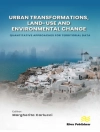Plastic has become a ubiquitous part of modern life. A cheap, lightweight material, it is used in everything from food packaging to consumer electronics and microbeads in cosmetic products. However, we are becoming increasingly aware of the problems our reliance on plastic is causing in the environment. For example, recent campaigns have highlighted the build-up of microbeads in the marine environment and the damage this is doing to wildlife, and the problem of marine litter, often in very remote locations. There are also concerns over exposure to plasticisers and their possible consequences for health.
The plastics industry is under increasing pressure, not only from the government and environmental groups, but also from consumers, to improve the environmental impact of their products.
This book presents an introduction to the uses of plastics and an overview of how they interact with the environment. It is a valuable resource for students studying environmental science as well as researchers working in the plastics industry, and policy makers and regulators concerned with waste disposal and environmental planning and conservation.
Cuprins
The Nature of Plastics and Their Societal Usage; Plastic in Marine Litter; Microplastics in the Environment; Nanoplastics in the Environment; Plasticisers and Their Impact on Wildlife; Plastics Additives and Human Health: A Case Study of Bisphenol A (BPA); Plastics Recycling; Plastics, the Environment and Society: Current Consensus and Future Directions
Despre autor
Ron Hester is an emeritus professor of chemistry at the University of York. In addition to his research work on a wide range of applications of vibrational spectroscopy, he has been actively involved in environmental chemistry and was a founder member of the Royal Society of Chemistry’s Environment Group. His current activities are mainly as an editor and as an external examiner and assessor on courses, individual promotions, and departmental/subject area evaluations both in the UK and abroad.












